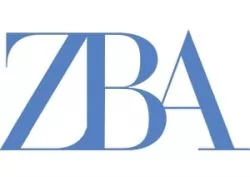Background
In recent times, the value of the Indian rupee has seen massive depreciation as a result of rising crude oil prices and the current geopolitical situation. Taking into account the liquidity conditions in the foreign exchange market, the Reserve Bank of India (“RBI”) in its press release dated June 6, 2022, has introduced certain measures to alleviate volatility concerns and expand sources of foreign funding, resulting in increased inflows.
External Commercial Borrowings (“ECBs”)
ECBs form a major component of India's overall cross-border capital flows and are usually drawn by eligible resident entities from recognised non-resident entities in the form of various permitted instruments. Under the current ECB framework, all eligible borrowers can usually raise ECB up to USD 750 million each financial year under the automatic route, are now permitted to raise up to US$ 1.5 billion. To enable Indian investment grade companies to raise money in light of a rising global interest rate cycle, the all-in cost ceiling has also been increased by 100 basis points, so now the interest rate spread permitted for foreign currency denominated ECB is 600 basis points and Rupee ECB is 550 basis points, respectively, over the applicable benchmark. These changes proposed by RBI are applicable up to December 31, 2022.
Foreign Currency Lending by Authorised Dealer Category I Banks (“AD Bank”)
All categories of overseas foreign currency borrowings by an AD Bank (including any existing ECBs), cannot exceed 100% of its unimpaired Tier I capital or USD 10 million (or its equivalent), whichever is higher. The above limit applies to AD Banks in respect of the aggregate amount availed by all its offices and branches in India from all their branches/correspondents abroad and includes overseas borrowings in gold for funding domestic gold loans. Normally, the funds borrowed cannot permitted to be used for lending in foreign currency except for export finance. RBI has now allowed AD Banks to raise such borrowings until October 31, 2022 for the purpose of lending in foreign currency for a wider set of end-use purposes, subject to the negative list set out in the ECB framework.
FPI Investment in Debt
Foreign portfolio investors (“FPIs”) have 3 investment routes in government securities (G-secs): (a) the general route with investment limits set under the medium-term framework (“MTF”), (ii) the voluntary retention route (“VRR”) where a committed amount has a 3-year lock in; and (iii) the fully accessible route (“FAR”) having no quantitative limit on investment by eligible investors. To minimise potential interest rate and exchange rate risks, RBI proposed the following changes:
- FAR framework: Currently only 5-year, 10-year and 30-year tenor G-secs are classified as eligible investments. To enable non-residents to invest in specified dated securities without being subject to any investment ceilings, all new issuances of 7-year and 14-year G-Secs will also be designated as specified securities.
- MTF framework: Investments by FPIs in government securities and corporate debt under the MTF, made up to October 31, 2022 will be exempted from the current applicable short-term limit i.e. 30% cap on the investments in G-Secs and corporate bonds having a residual maturity of less than 1 year. Further, FPIs have a limited window up till October 31, 2022, during which they can invest in corporate money market instruments such as commercial paper and non-convertible debentures with an original maturity of up to 1 year. FPIs have been given the option to stay invested in these instruments till their maturity or sale and such investments will not be included for calculating the short-term limit.
Takeaway
Domestic financial market conditions have witnessed severe stress since the COVID-19 pandemic, leading to increased volatility of prices across most asset classes. The yield curve on debt instruments have steepened sharply amidst concerns about fiscal slippage and sustained sell-off by FPIs. The financing conditions in the commercial paper and corporate bond market have also deteriorated, reflecting overall market conditions and generalised risk aversion. The new measures introduced by RBI will accelerate the pace of liberalisation by simplifying existing market regulations and attracting larger external debt flows. With the possible inclusion of Indian G-secs in global bond indices, achieving additional bond inflows is an important objective for the RBI this fiscal year, given the bourgeoning size of the FAR securities. The short-term policy changes proposed are a step in the right direction, considering that the Indian economy has historically remained relatively immune to global financial crisis.
The above is a generic analysis and should not be regarded as a substitute for specific advice based on the facts of a client's objectives and specific commercial agreements reached. Please do reach out to us at mail@zba.co.in for any queries.


